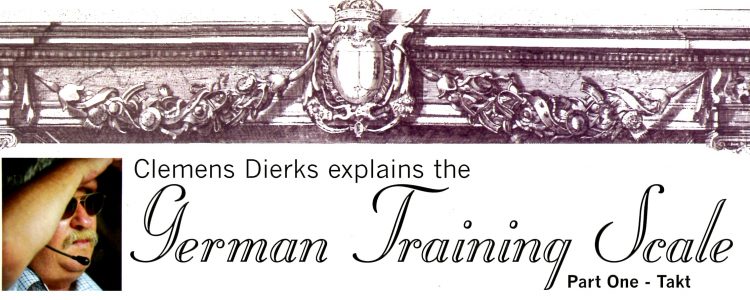
One of the huge advantage dressage riders have in Germany is that they – and their trainers – all work along the lines of the German Training Scale, a sophisticated guide to the training of a horse that not only sets out the exercises to be ridden, but why you use those exercises, and when. This series, created with the assistance of Australia’s most successful dressage trainer, Clemens Dierks, will introduce you over the next six segments to the elements of the training scale: Rhythm, Losgelassenheit, Contact, Schwung, Straightness, Collection.
The training scale in a sense is a progression, working from the simplest to the most complicated requirements, but this is not entirely true, since elements from further along the scale are required to achieve the aims of the earlier principles. It should probably be seen more as a matter of emphasis.
To achieve takt or rhythm, the first step on the scale, we obviously need to have a certain degree of acceptance of the bridle, a degree of straightness, and in its most elementary form, even a degree of collection. In these early stages the rider is developing the horse’s power to push, to propel his body, later as the work becomes more sophisticated, we develop the power to carry. This progression occurs not only as the horse’s training progresses over a period of time, but within each working session. Remember when we are talking about rhythm, we are talking about the natural rhythm that is suitable to that particular individual. As the handbook of the German FN, The Principles of Riding – Book I, notes:
‘To achieve this, the rider must ride the horse forward evenly, with an elastic but still and deep hand. ‘Forward’ does not mean ‘faster’. In a faster tempo the horse would be running and would break his rhyrhm. ‘Forward’ means engaging the quarters and asking the hind legs to actively propel the horse’s body forward. The regularity of movement in all three paces is the foremost objective in this phase of training.’
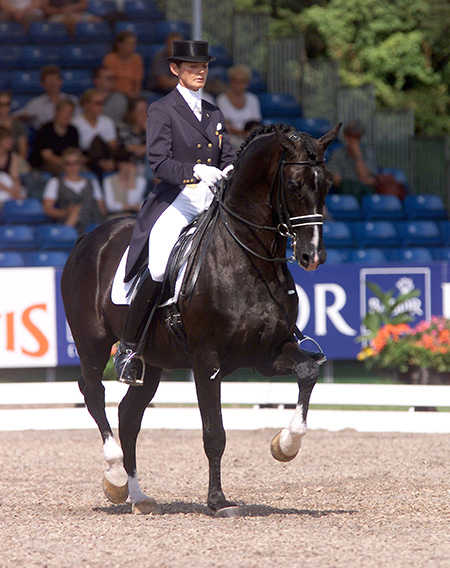
Coby van Baalen and her medal winning Ferro
In the wonderful book he co-wrote with Coby van Baalen, the German master trainer, Johann Hinnemann remarks:
“If a horse ever starts making rhythm mistakes and moving unevenly, immediately return to easier work so that the horse can find his rhythm again. Rhythm is the foundation of movement and never should be compromised – not for one second.”
Let’s join Clemens Dierks in his little gazebo perched above his outdoor arena, as his wife Judy starts work on her latest star, Frontier – a four-year-old gelding by Falkrich, and bred by another German who made Australia his home, Gerhard Quast.
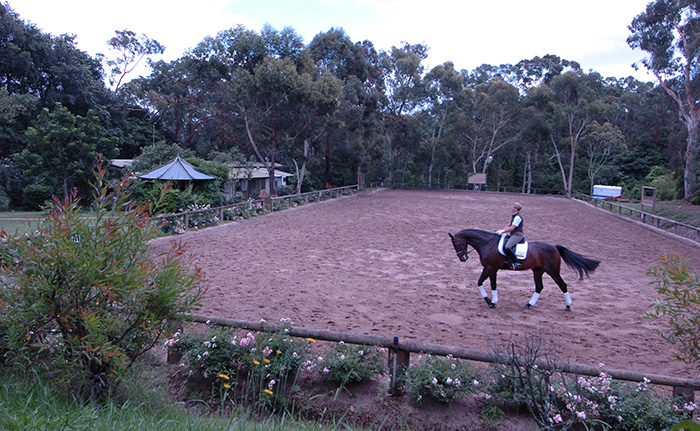
“The first thing is ‘takt’ not ‘rhythm’, there is a difference. The German word is takt and the definition is ‘beat’ – beat is the clarity of the steps, rhythm is more an identical uniformity of the strides. I explain to students that a lame horse can have perfect rhythm if it repeats its lameness perfectly, but the steps are not clear – not a clear four beat, or two beat or three beat. Takt is the word; beat is what you look for. The horse with good takt is very hard to find – they really stand out when you see them.”
Can we make takt?
“We can un-make it. A lot of people ruin the takt of the beat by riding too fast, by over-riding, by interfering with the natural paces. Horses have takt by nature, but riders interfere with it by trying to create it. A good horse has it, the rider can only lose it. .. ”
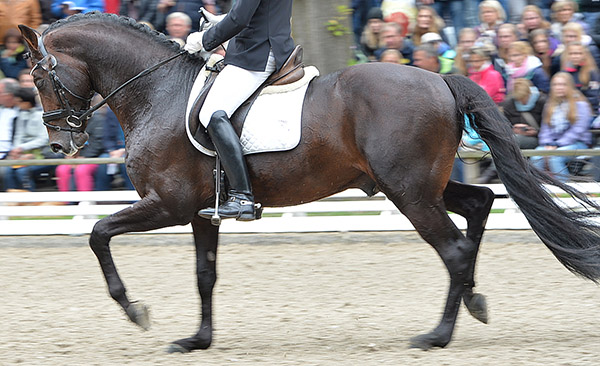
only the rider can lose the rhythm…
So what is Judy doing with this young horse now?
“She is walking him, forwards, downwards. Not as long in the neck as some would like to see, but with our horses we try from the beginning to get them through the neck, through the poll, over the back, so they can stretch forwards down and go on the bit and into the bridle from behind. When they give the feeling that they want to stretch a bit, we allow that. Walking gets them going, it lubricates the joints, it’s an essential part of the warm up.”
At this point Judy comes to a perfect square halt – how did she do that, she didn’t seem to do anything special?
“Yes she did, she made a very little adjustment before the horse was able to stop not under himself, she asked him to move up his inside hind leg.”
Now Judy has started to bend the gelding, asking for a little travers, a little half pass, still in walk. As Clemens explains, this is an aid to achieving that first aim:
“Travers and half pass in walk, these movements free up the walk and help the horse to get a very beautiful four beat walk. If you have a horse with a tendency to a lateral, two beat, walk, this is one way to fix it. If you have a horse that is inclined to be lateral in the walk, do a lot of half pass walk, because they can’t be lateral in half pass, they have to go into four beat.”
“It is very important to recognise the distinction between the rhythm and the beat – look at this horse see how he has ro put down each foot individually, he can not do it any other way.”
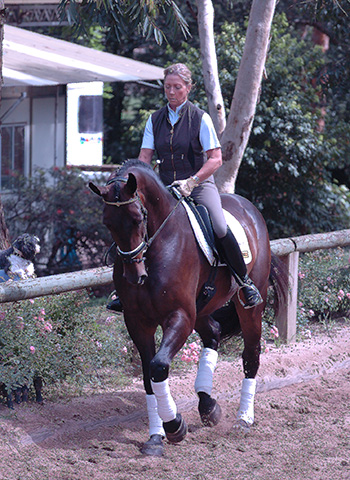
Judy has moved on to a relaxed rising trot:
“Just a nice rising trot with a very nice beat, with the tendency to stretch forwards downwards, the next step on the scale is losgelassenheit- you can see this horse is a bit fresh, he is holding himself a little, it is not yet loose enough – that comes in time. Watch for the rhythm, the swinging over the back. If you are a calm rider and can sit properly, then the horses will relax, by keeping them in this steady beat, you can create the next step.”
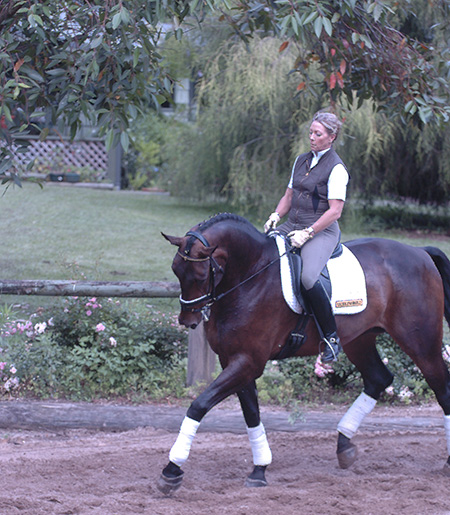
‘This horse is still looking around, he is looking at Roz taking photos, he has a bit of nerve, he is not a dumb horse. Right from the start we are working to get the hind leg up and under so that the horse goes forward, to the bridle from behind, trying all the while to get the feeling that he likes to stretch forwards and downwards.”
Where is the horse getting the rhythm – from Judy’s seat?
‘The horse is maintaining the rhythm because Judy can sit within the rhythm. You can’t ride rhythm into a horse – they have it – you can only ruin rhythm by bad riding. When you let them loose in the paddock, you see that they move well. When you ride, because there is an argument here or there to get the frame or whatever, you can get bridle resistance and that can create unevennesses, and the loss in the rhythm and the tempo. Only a totally submissive, loose horse can really show perfect rhythm.”
next we move on to canter
NEW Black & White Lona gloves  from Zilco
from Zilco
With the colour-contrasting piping and the stylized hand logo on the characteristic fastener.
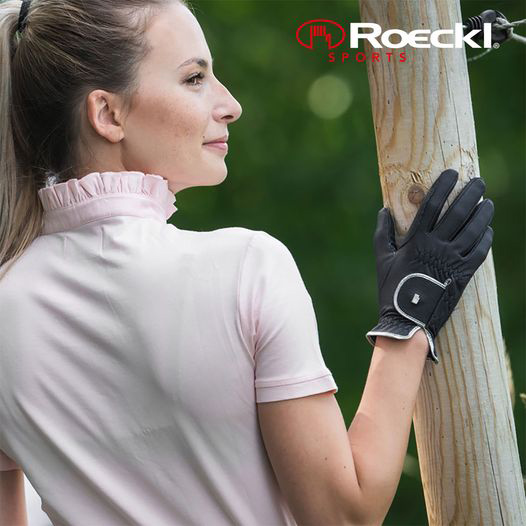
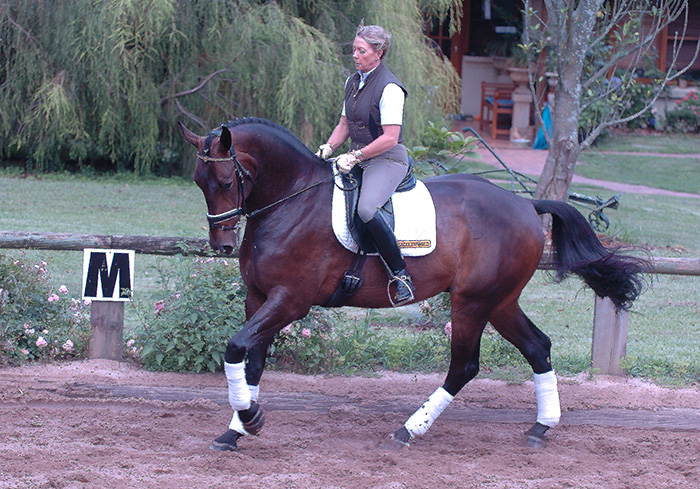
It was time for canter. ..
“We are still just warming up. There must be a very clear three beat in the canter, and a nice moment of suspension. A lovely big canter with the hind leg stepping under. They have to find the self-carriage and balance, it all takes years. Some horses have more pushing power; some have more power to take weight. The power to carry, to take weight, comes with work – the power to push also comes with work, but some horses find it easier to carry, than push. Like this horse could carry weight, it is a big horse, he maybe finds it more difficult to push, so we have to work on the hind end.”
Why do we see so many four beat canters?
“That’s just riders, they don’t keep the horse active enough, when they collect they don’t use their seat, they bring the horse back from the front, instead of closing the horse up from behind. Some horses have more talent in the canter than others but basically they go as well as you ride them. Even with a horse that has a natural tendency to four beat canter, with good riding you can improve that, bad riding you make it worse.”
“This first work is gymnastic body building work, then we are ready to move to the next stage, losgelassenheit.”
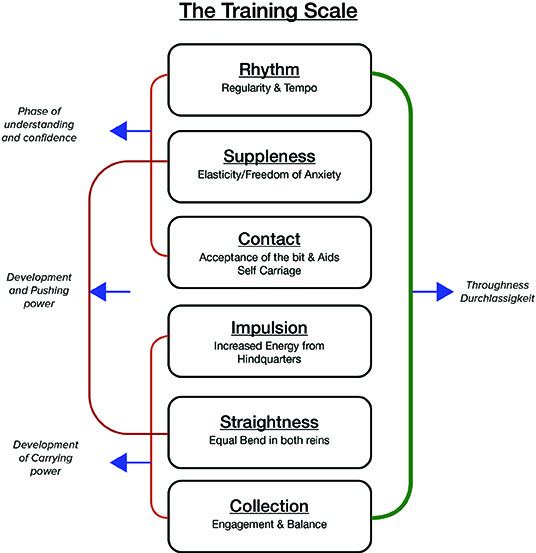
Total Hope, one of the great choices of stallions available from the enormous range at International Horse Breeders..
For More: www.ihb.com.au
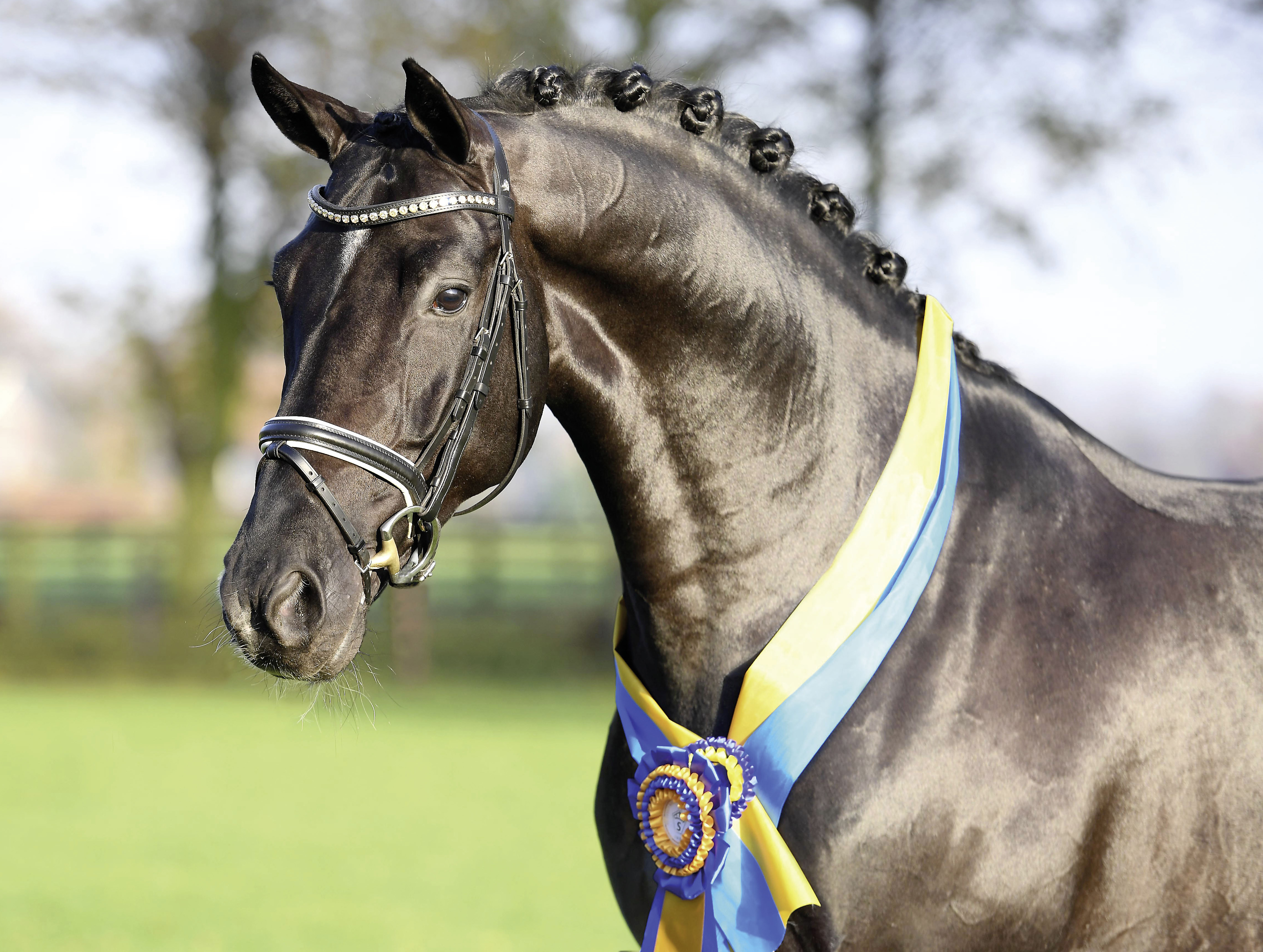




Fabulous article. I look forward to the rest of the series.